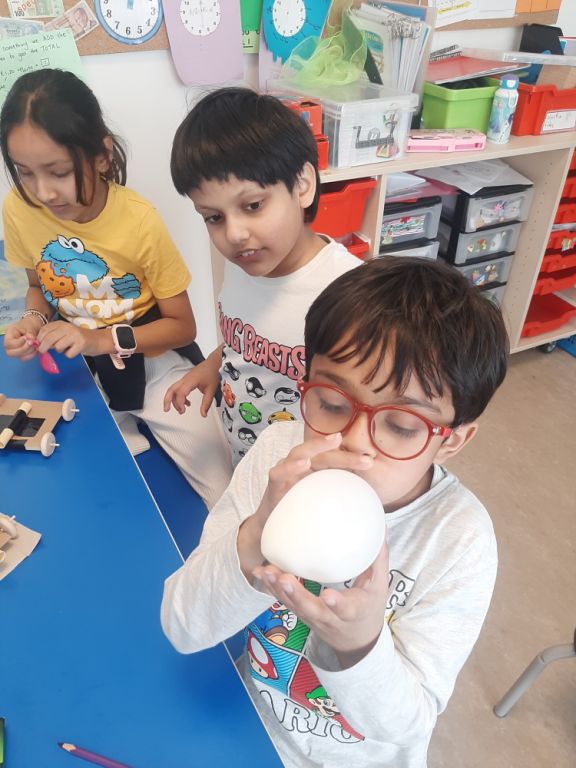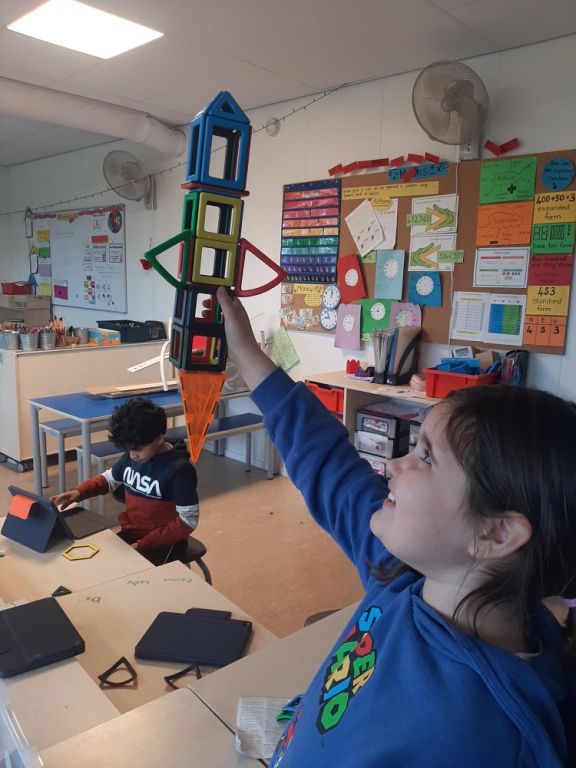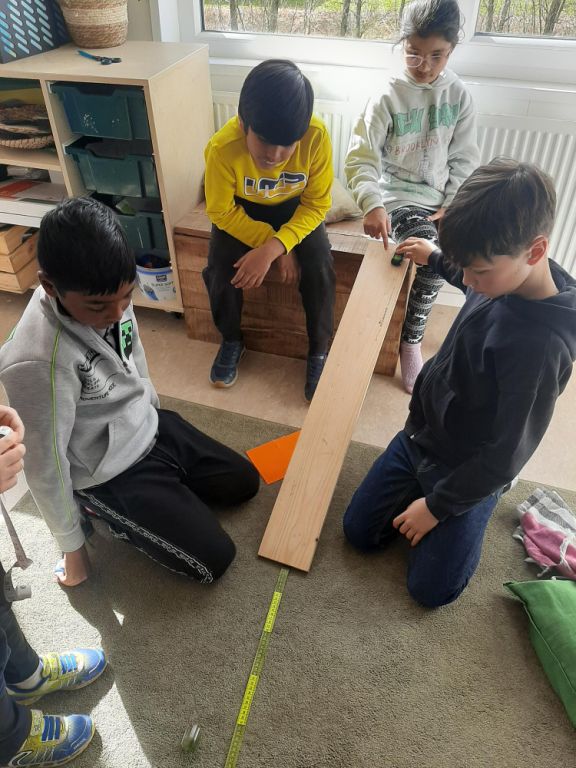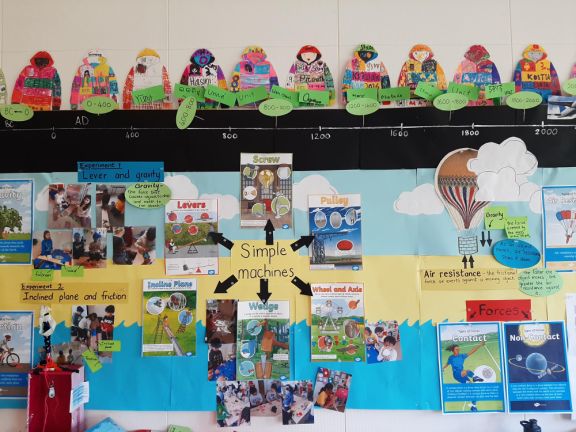This unit placed a strong emphasis on student agency, as students took ownership of their learning by investigating, experimenting, and creating solutions to real-world challenges. They embraced their role as inquirers and problem-solvers, asking questions like “How does it work?” and “What makes it work the way it does?” Students developed critical thinking skills as they tested their ideas, reflected on their experiments, and adjusted their designs.




Describing how their machines worked
In Language, students wrote an explanatory text using the Talk for Writing model to describe how their simple machines worked and how they would solve a real-world problem. First, they orally rehearsed their ideas before writing, ensuring a clear introduction and logical sequence. They used key vocabulary like force, motion, friction, and effort to explain the function of their machines. Students worked to describe the operation of their machines, how forces were involved, and how the machines reduced effort or changed direction. They concluded by reflecting on the real-world applications of their designs. Through this process, students developed their communication skills and deepened their understanding of how simple machines solve everyday problems.
How do shapes appear in machines?
In our standalone Mathematics unit, students explored 2D and 3D shapes using terms like sides, edges, vertices, and angles. They described and analyzsd shapes such as triangles, rectangles, circles, cylinders, and spheres, learning how these shapes appear in simple machines. For example, students noticed how circular wheels help machines move smoothly and how triangular ramps help lift objects. The students’ ability to connect geometry with simple machines helped them develop critical thinking skills, as they questioned how the shapes and angles of their designs would affect the function of their machines. In addition, students learned about fractions, understanding how to divide objects into equal parts, which helped them think mathematically about effort and load distribution in their machines.

Socio-Emotional Development
Throughout the unit, students worked in groups to design and test their simple machines, which helped them practice collaboration, resilience, and problem-solving. When their designs didn’t work as expected, they reflected on why their machines failed, demonstrating critical thinking and using their research skills to make adjustments. This process encouraged a growth mindset, as students learned that mistakes are part of the learning process. They also practiced self-regulation and empathy as they worked together, listened to others’ ideas, and supported one another through challenges.
.png?width=576&height=230&mode=crop&format=jpeg&dpr=1.0&signature=d5104b1797cbbd51eae2dce4f9f74b0e3c3298ac)